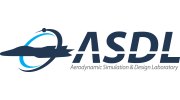김종암 교수
서울대학교 항공우주공학과
|
학력 / Education
|
|
| 1988 |
서울대학교 항공우주공학과 학사
|
| 1990 |
서울대학교 항공우주공학과 석사
|
| 1997 |
프린스턴대학교 기계항공공학과 박사
|
|
경력 / Career
|
|
| 1991-1992 |
KIST 슈퍼컴퓨팅센터(現 KISTI) 연구원
|
| 1997-1998 |
스탠포드대학교 난류연구센터(CTR) Research Fellow
|
| 1998-Present |
서울대학교 항공우주공학과 교수
|
| 2012-Present |
미국항공우주학회(AIAA) Associate Fellow
|
| 2019-2020 |
한국산업응용수학회 회장
|
| 2019-Present |
미국항공우주학회(AIAA) Fluid Dynamics Technical Committee member
|
| 2020-Present |
국제전산유체학회(ICCFD) Scientific Committee member
|
| 2021 |
한국전산유체공학회 회장
|
| 2022 |
한국항공우주학회 회장
|
| 2002, 2006 |
KISTI Award of High Efficiency Computing
|
| 2003 |
제 13회 과학기술우수논문상, 한국과학기술단체총연합회
|
| 2008, 2019 |
KAI 항공우주논문상
|
| 2011 |
신양공학학술상
|
| 2013 |
HPC Innovation Excellence Award, IDC(International Data Corporation)
|
| 2014 |
공로상, 한국연구재단 이사장상
|
| 2016 |
한국항공우주학회 항공우주교육상 우수상
|
| 2018 |
한국항공우주학회 학술상
|
| 2020 |
한국전산역학회 학술상
|
| 2021 |
한국산업응용수학회 KSIAM-금곡 학술상
|
| 2023 |
한국항공우주학회 박철공력상
|
| 2023 |
과학기술정보통신부 대한수학회 올해의 최석정상
|
| 2009.05 ~ 2015.12 |
장경간 케이블교량 내풍구조 시스템 개발 -내풍단면 설계 전용 분산형 전산환경 개발, 국토교통부
|
| 2010.10 ~ 2015.09 |
저중력 극저온 추진제 거동 예측기술 연구, 한국항공우주연구원
|
| 2013.09 ~ 2015.10 |
고체추진기관 유동-구조 3차원 통합해석 S/W개발, 국방과학연구소
|
| 2013.11 ~ 2015.12 |
국방생체모방자율로봇 특화연구센터, 생체모방 구조/메커니즘 연구실, 날갯짓 초소형 비행체 유연구조 연구 (BMRR-42), 방위사업청/국방과학연구소.
|
| 2014.07 ~ 2019.06 |
다양한 중력환경에서의 액체로켓 극저온 추진제/산화제 탱크 내부 고정밀 다상유동 해석을 통한 잔량 예측 연구, 한국연구재단
|
| 2014.09 ~ 2016.12 |
통합좌표계 유동 해석 기법을 이용한 공기 흡입구 형상의 최적 설계 기술, 국방과학연구소
|
| 2014.10 ~ 2015.09 |
Flow Analysis and Design of LRN Airfoil, Lockheed Martin
|
| 2014.11 ~ 2017.11 |
초공동 상태의 운동체/제어판 작용 유체력 및 공동 특성 연구, 국방과학연구소
|
| 2014.12 ~ 2019.12 |
직격 요격체 설계를 위한 유동해석기술 연구 (HV-21), 방위사업청/국방과학연구소
|
| 2015.07 ~ 2020.06 |
실무지식 기반 창조형 우주융합 핵심인력 양성사업, 과학기술정보통신부/한국연구재단
|
| 2015.09 ~ 2017.12 |
액체로켓엔진 노즐에서의 측면하중 발생에 관한 유체-구조 연계 해석, 한국항공우주연구원
|
| 2016.03 ~ 2018.12 |
국방생체모방자율로봇 특화연구센터, 생체모방 복합거동제어 연구실, 날갯짓 초소형 비행체 유연구조 연구 (BMRR-51), 방위사업청/국방과학연구소.
|
| 2016.08 ~ 2019.02 |
전산열유체 분야 지속적인 사용자 서비스를 위한 앱 유지보수 및 커뮤니티 확산, 한국과학기술정보연구원
|
| 2016.10 ~ 2018.09 |
Abrupt Wing Stall 유동해석 및 감소기술 연구, 한국항공우주산업
|
| 2017.01 ~ 2020.12 |
전투기 전산유체해석 코드 개발, 한국항공우주산업
|
| 2017.05 ~ 2019.12 |
고차 정확도 수치기법을 이용한 고기동/고받음각 비행체 주위 대규모 박리유동의 전산해석 연구, 국방과학연구소
|
| 2017.09 ~ 2020.08 |
터보펌프 공동현상에 의한 유동 특성 및 POGO parameter 추출 연구, 한국연구재단
|
| 2020.09 ~ 2023.09 |
Physics-Based Direct Simulation of Multiple UNDEX Using High-Fidelity Numerics and Accurate Description of Thermodynamics and Phase Change, Office of Naval Research Global
|
| 2020.12 ~ 2025.12 |
데이터 기반 유동 모델링 특화연구실, 국방과학연구소
|
| 2020.12 ~ 2022.11 |
갑판 유동장 해석을 위한 비정상 수치기법 연구, 한국항공우주연구원
|
| 2019.10 ~ 2025.06 |
저압/저유량 배관의 장거리 검사를 위한 차세대 배관로봇 기술 개발, 한국가스공사
|
Researches in professor Kim’s Lab. largely focuses on the development of advanced numerical methods for solving partial differential equation (PDE) and their applications to several aerodynamic engineering fields. Regarding advanced numerical methods for reliable numerical simulations, accurate, robust and efficient FVM-based flux schemes and limiting schemes (e.g. RoeM/RoeM_N, AUSMPW+/M-AUSMPW+/AUSMPW+_N fluxes, and MLP/MLP-u limiters) are developed. For higher-order methods such as DG, FR/CPR, higher-order shock-capturing method (hMLP, and hMLP_BD) are developed. Using these numerical methods, a number of applications are being conducted. First, we are conducting researches on all-speed multi-phase flows with phase change. This research area includes cavitation, multi-phase shock analysis and physics of cryogens inside liquid rocket. Fully integrated (fluid-structure-burning) computational simulations for multidisciplinary phenomena inside solid rocket motor are being conducted. Particular interests are focusing on nonlinear feedback interaction of fluid, solid, and burning module in order to examine highly coupled unsteady phenomena between hot gas flow, structure deformation and propellant burning. Fluid-Structure Interaction simulations of biomimetic flapping MAV’s are also being conducted. To achieve optimal performance of flapping MAV’s, analyses are focused on the unsteady aerodynamic force generation mechanism and the flexibility of the wing depending on insect’s flapping motion and structural materials. Aerodynamic shape design optimization is performed with high-fidelity computational analysis and optimization methodologies. Shape design optimization of airfoil, wing, wing-body configurations and intake is conducted. And, we are conducting researches on active flow control using synthetic jet to provide additional momentum to external flow for separation delay.
Google Scholar
ResearchGate






